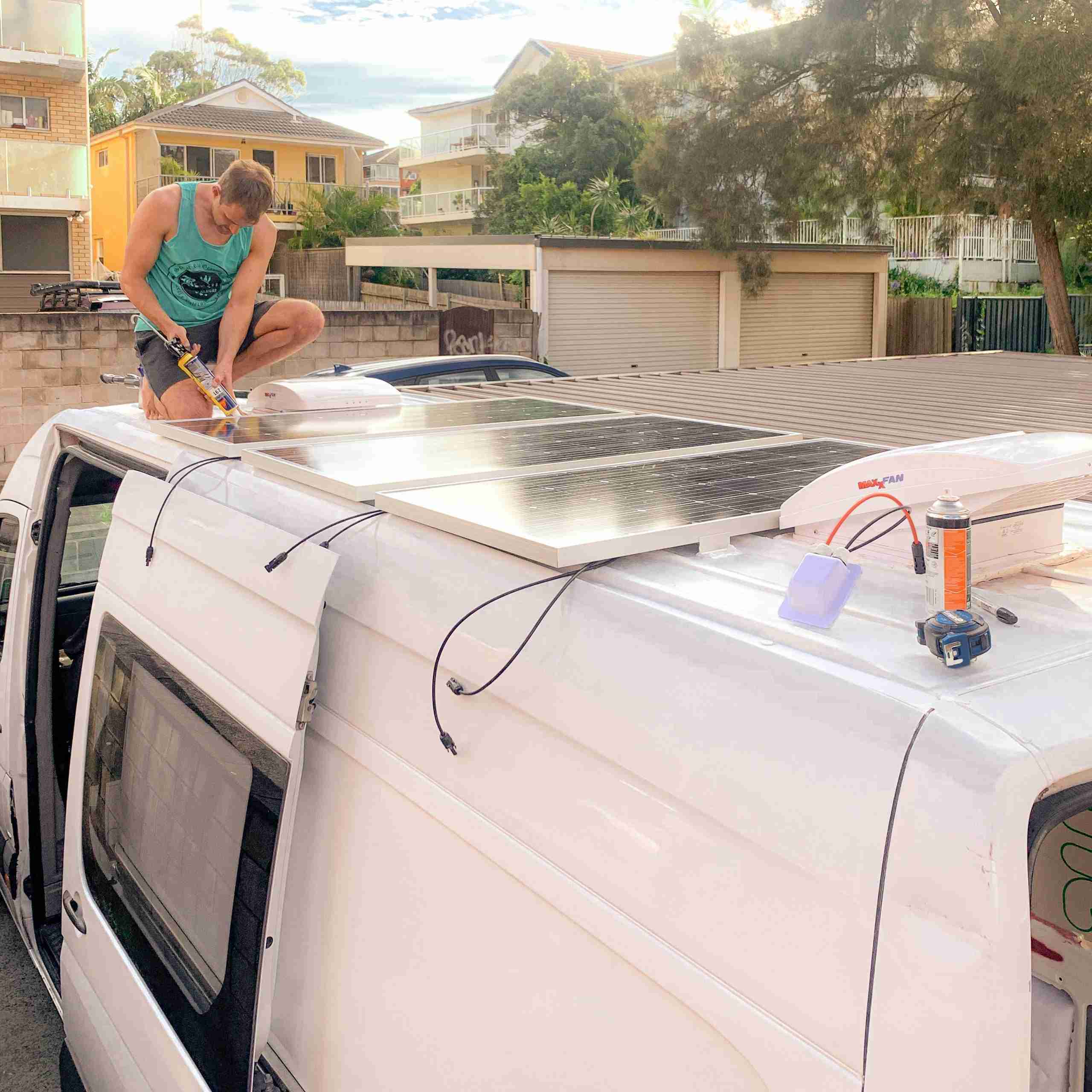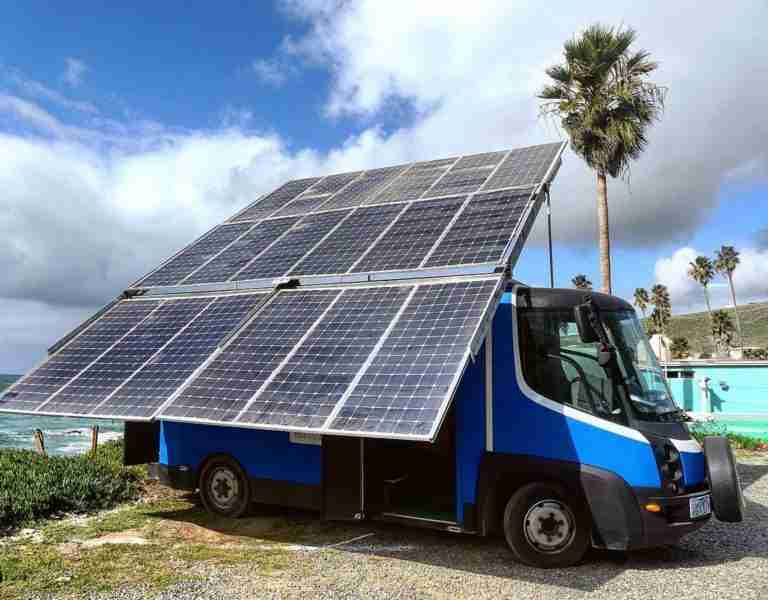Everything You Need to Know About 12V Solar Panels
Updated on: July 2025
Are you finding the world of solar panels a bit baffling, especially when it comes to the popular 12V options? You’re not alone! In this blog, we will explain how solar panels, particularly 12V ones, really work. We’ll explore the different types available and break down their workings in a way that’s easy to grasp.
Our journey with 12V solar panels began when we decided to build our own camper van from the ground up. It was a project filled with research, trials, and a whole lot of learning. Fast forward two years, and we’ve been living in our solar-powered van, experiencing firsthand the ins and outs of these amazing energy sources. So, whether you’re a camping enthusiast, looking to power your off-grid adventure, or just curious about solar energy, join us as we share our knowledge and experiences with 12V solar panels. Let’s make solar simple together!
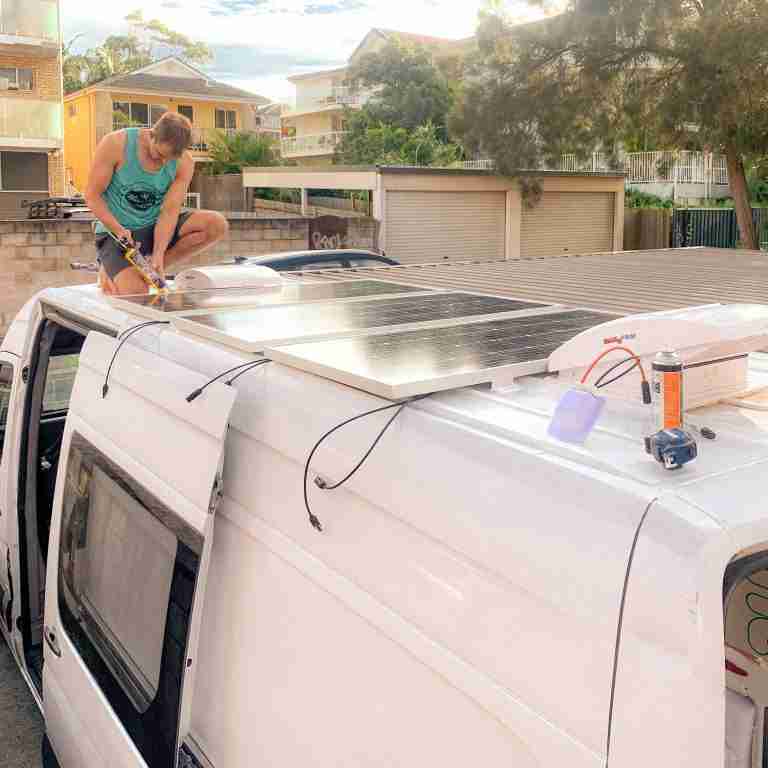
What do I need for a van solar system?
A campervan solar power system is made up of four major electrical components. Also needed to complete the electrical system is fuses, MC4 connectors, battery cut off stitches and electrical lugs
Solar Panel
A solar panel’s primary goal is to generate power. This is accomplished by converting sunlight particles into electricity. The primary aim of a solar panel is to produce energy. This energy is stored in the batteries as DC power.
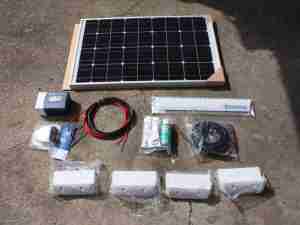
Wiring
The primary goal of the wiring is to allow electricity generated by the solar panel to be transmitted to additional devices and storage components. You must use an MC-4 connection terminal to connect a cable to a solar panel properly.
A high-quality cable must be used for your campervan’s solar panel array, as it can affect how well they operate over time.
Charge Controller
The main goal of a solar charge controller is to keep the incoming voltage and current from your solar panel under control. This equipment aids in the prevention of any long-term problems that might harm your solar charge system.
If you get a low-quality or faulty charger, your batteries can be damaged easily, and this will result in an expensive replacement process.
Leisure Battery
A leisure battery’s primary goal is to safely store solar power system electricity. This energy may later be utilized to power devices inside of your campervan.
A battery’s capacity determines how much energy it can hold, measured in amp-hours (Ah). The larger the Ah rating on the battery, the more power it will be able to store.
How Does A Solar Panel Work?
A solar panel is a device that converts the energy from direct sunlight into electrical power that may be used in your campervan. The solar panel is usually attached to the roof of a campervan, and it consists of cells that collect sunlight particles.
Photons from the sun hit the solar cells inside a panel to produce an electric charge. A typical 14.7-volt system has 32 units, each converting light into electricity at different rates and strengths based on their size or construction material used in making them!
When the sun’s light hits a photovoltaic cell, it knocks loose an electron from its atom inside. The solar cells are connected to each other through a conducting wire. This creates an electric circuit that produces electricity when light shines on them!
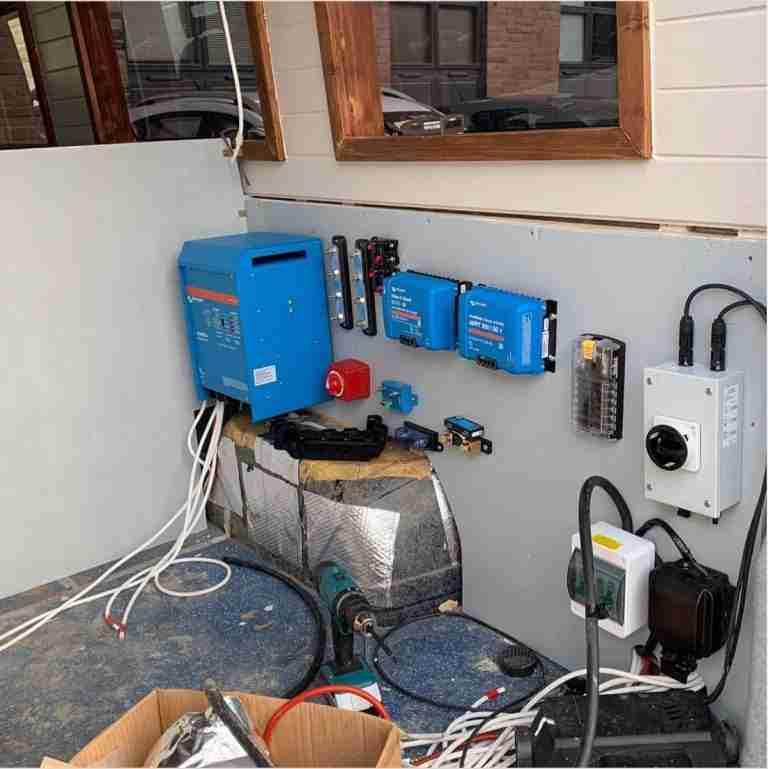
Solar Panels Are Used For A Campervan?
Monocrystalline Solar Panels and Polycrystalline Solar Panels are the two most common types of panels used in a campervan. These panels are both great options for your RV solar system. However, it’s worth noting that there are a few key differences to consider before making your decision.
The Differences Between A Monocrystalline & Polycrystalline Solar Panel?
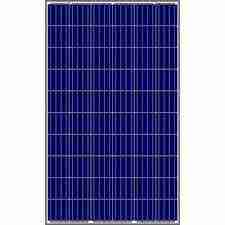
Polycrystalline Solar Panel
- Panels that have polycrystalline cells are comprised of many silicon fragments that are then fused together. They produce slightly lower amounts of energy than Monocrystalline panels do.
- The colour of the Polycrystalline panel is usually blue.
- The amount of space required for a Polycrystalline panel is generally more significant than that needed for Monocrystalline panels to achieve the same power output
These panels are typically less expensive than Monocrystalline panels.
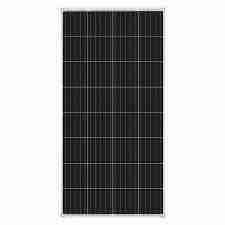
Monocrystalline Solar Panel
- Panels with a single crystal of silicon are used in monocrystalline solar technologies. As a result, these systems are somewhat more efficient than polycrystalline panels.
- The surface of Monocrystalline panels is usually black in colour.
- The amount of floor area required for Monocrystalline panels to produce the same power as a Polycrystalline panel is generally less.
- The panels are typically more costly than Polycrystalline.
Fixed vs. Portable Solar Panels
Fixed and portable panels are the most popular varieties accessible for vanlifers on the road.
Fixed Solar Panels
Fixed panels are installed on the roof of your RV. They’re tough to remove once they’ve been put in place, making them secure from thieves and harsh weather conditions. However, special attention must be paid to various factors when mounting them, and they frequently need professional installation. They are generally more expensive than portable systems but do not.
Portable panels, on the other hand, allow you to position your system wherever you choose. They are sometimes less expensive than fixed panels but require a place to store them and their wiring within the RV. They can also be easily damaged in strong winds, stolen if left unattended, and must be erected and packed down each time.
Portable and fixed units provide slightly different options for solar power charging while you’re parked in the shade. Portable units can generate more energy than stationary devices since they can be relocated to follow the sun’s position.
Flexible Solar panels
The portable panel’s array is a fantastic alternative for people who want to use renewable energy but don’t have much space. When not in use, flexible panels may be rolled up and stored.
Because the material is flexible, you may easily install it on almost any surface of your campervan without fear of structural damage.
These are typically more expensive than rigid solar panels. However, they are less efficient than rigid panels as well.
Because they don’t always capture sunlight at a 90-degree angle, these flexible solar array’s output power levels are typically lower.
Whether you have a portable or permanent system, having a clear line of sight to the sun is crucial in efficiently producing energy. Not leaving them in the shade consumes more sunlight hours and lowers your panels’ efficiency. If you can’t follow the sun with your panels as effectively as possible, you will get more out of your panels.
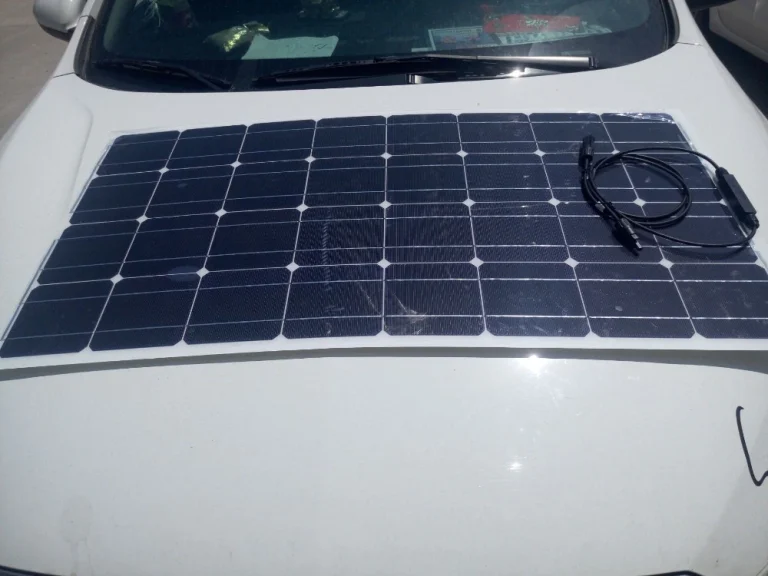
How to Choose the Right Campervan Solar panels
Several different power sources are available to charge your batteries. You can hook up to shore power, with a generator or even your vans engine.
Because most campervan electrical systems include a combination of two or three of these processes, don’t rely on anyone approach for 100% of your power.
For us, the bulk of our power comes from our solar panels. The engine charges the battery as while drive, but we don’t want to rely too much on this because we prefer to stay for days on end without moving about.
So to keep things simple and illustrate the point more clearly, we will ignore any other source of electric supply in this post.
To determine which camper van solar panels are best for your vehicle, figure out how much power you’ll need and match it with the panels.
There’s no sense in putting solar panels up if they aren’t suitable for your needs. You’ll waste money by installing too many solar panels and consume more roof space than necessary.
Too few panels, and you won’t generate enough energy to power your appliances, making living in a van less comfortable than you planned.
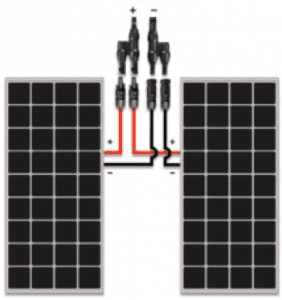
How To Wire Solar Panels In A Campervan?
There are 2 main ways to wire for panels together with a charge controller, parallel wiring or series.
Panels in parallel
In a parallel circuit, if one panel fails, the rest will keep providing electricity. The amps add up when solar panels are connected in parallel, but the volts remain the same.
If you combine two solar panels that are both rated at 12 volts and 10 amps in parallel, the entire solar array will be powered by a total of 12 volts and 20 amps. Because the current is more significant, you’ll need thicker, more costly wiring.
| PROS | CONS |
|---|---|
|
Parallel can handle being in the shade much better than series wiring Panels can be mixed and matched to significant effects. The electricity continues to flow if one panel has a problem. |
Because of thicker wires and more connections, it is somewhat more expensive to install. Ideal for campervans with an electric setup where saving energy is necessary. |
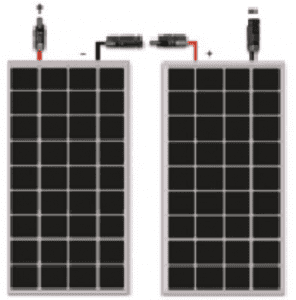
Panels in series
If any panel in a solar array is faulty, the entire campervan solar system will shut down. Voltage is cumulative when wiring solar panels in series, but power remains constant.
If you have two solar panels wired in series, each rated at 12 volts and 10 amps, the entire array will be 24 volts and 10 amps. The system’s current (amps) will never exceed that of the lowest-rated panel, regardless of how many solar panels you have connected in series.
Imagine you have two 100w panels rated at 5 amps. If you add a 150w panel rated at 12.5 amps, it will provide only 5 amps, thus lowering the maximum output to around 60 watts for that particular panel.
When the panels are connected in series, they are dependent on each other. If one panel is covered, the entire system’s production will drop dramatically. Drastically.
| PROS | CONS |
|---|---|
| Smaller amps enable you to use smaller wiring, saving money.
You don’t need as many connections, which saves you money. | If one panel has a problem, it means you’ll be unable to generate any electricity.
It isn’t ideal for combining different-sized panels. The whole system is negatively affected by shade. |
How many watts of solar do I need?
When it comes to deciding how much power your campervan will require, the first step is to figure that out. It’s the only way to be sure the entire system will fulfil your demands.
It may appear daunting at first. We used the calculator from MyGenerator.com.au
Below are some steps to take to get going
- Make a list of everything electrical you’ll need in your RV, including appliances and gadgets.
- Examine the appliances to determine which ones use what amount of amps. Some devices list amps, while others list watts. To calculate amps, divide the watts by volts. For example, a device is 9 watts, your batteries are 12 volts. 9 divided by 12 (watts divided by volts) is 0.75 amps
- Multiply the figure above by 1.2 if you’re using household (AC) appliances. Allow for DC to AC power conversion costs when converting from AC to DC.
- Estimate the number of hours each day the appliance will be in use.
- To calculate the total amps required per day for each device, multiply amps (from step 3) by hours (from step 4).
- All amps required for each day must be added together. This indicates how many amp-hours you expect to use each day.
- On occasion, you’ll burn through more energy than others, so be prepared. We add 20%, but you may want to adjust it up or down to fit your needs.
Solar Charge Controller
Now that you’ve installed the panels (solar array) on your campervan, you should be able to generate electricity. However, simply connecting the solar array directly to the batteries is not the best method.
As previously stated, the amount of power generated by your solar array will vary considerably. To help manage the power, charge controllers must be used.
What Is A Solar Charge Controller?
A charge controller is a piece of electrical equipment that controls the voltage and/or current supplied by the connected solar array to the battery bank.
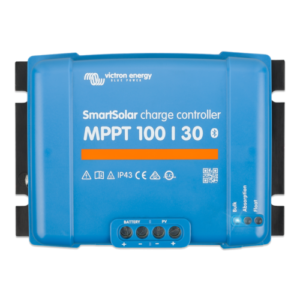
A typical leisure battery requires around 13.8 to 15.5 volts to completely recharge, so most charge controllers produce 10.5 to 15 volts.
When the solar array generates more power than required to recharge the batteries, a charge controller prevents this excess electricity from entering and damaging your batteries. This ensures that you do not overcharge your batteries!
The two basic types of controllers are:
- PWM (Pulse Width Modulation)
- MPPT (Maximum Power Point Tracking)
PWM Controllers are the the cheapest. They simply switch on and off to maintain 13.27-14.60 volts (typically 14v). MPPT controllers offer more control over voltage levels than PWM but come at a cost.
Do You Need A Solar Charge Controller?
If your solar array is directly linked to the batteries, you may be in for some serious trouble. Batteries have a particular voltage capacity.
Exceeding the voltage of the batteries would put the battery bank at risk of numerous overcharging and over-discharge events. This can severely damage or even result in a fire.
In short, without a charge controller in your camper van electrical system, you are taking significant risks.
A solar charge controller is an electronic device that manages the voltage and current coming from the solar panels to prevent overcharging and damage to your battery bank. It will help protect against the reverse-current flow (i.e., when energy is used from the battery bank and sent to the solar panels) by blocking any reverse current.
A basic controller will have a low voltage disconnect feature, which allows your system to turn off when it senses that the battery is fully charged (around 14 volts). Since lead-acid batteries don’t hold their charge well, if you use them regularly and then let them sit idle for a while, you can set the controller to maintain an appropriate charge level on your batteries.
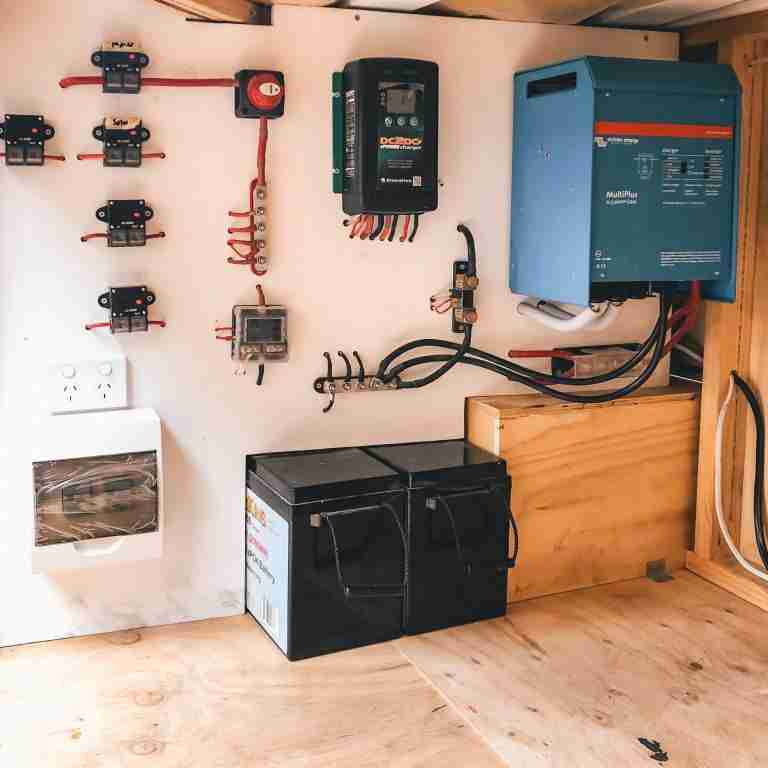
Summary
Solar energy is a complicated subject to understand. There are numerous elements to consider when selecting the best solar panel type, installation location, panel orientation, heat, and the amount of sunshine hours you get. Even after you’ve captured the energy, correctly utilizing it may be challenging.
The more money you spend on a high-quality solar system, including panels, inverters, regulators, and batteries, the more energy you will produce. The higher your energy star rating is, the less power it will draw from your solar power source.
